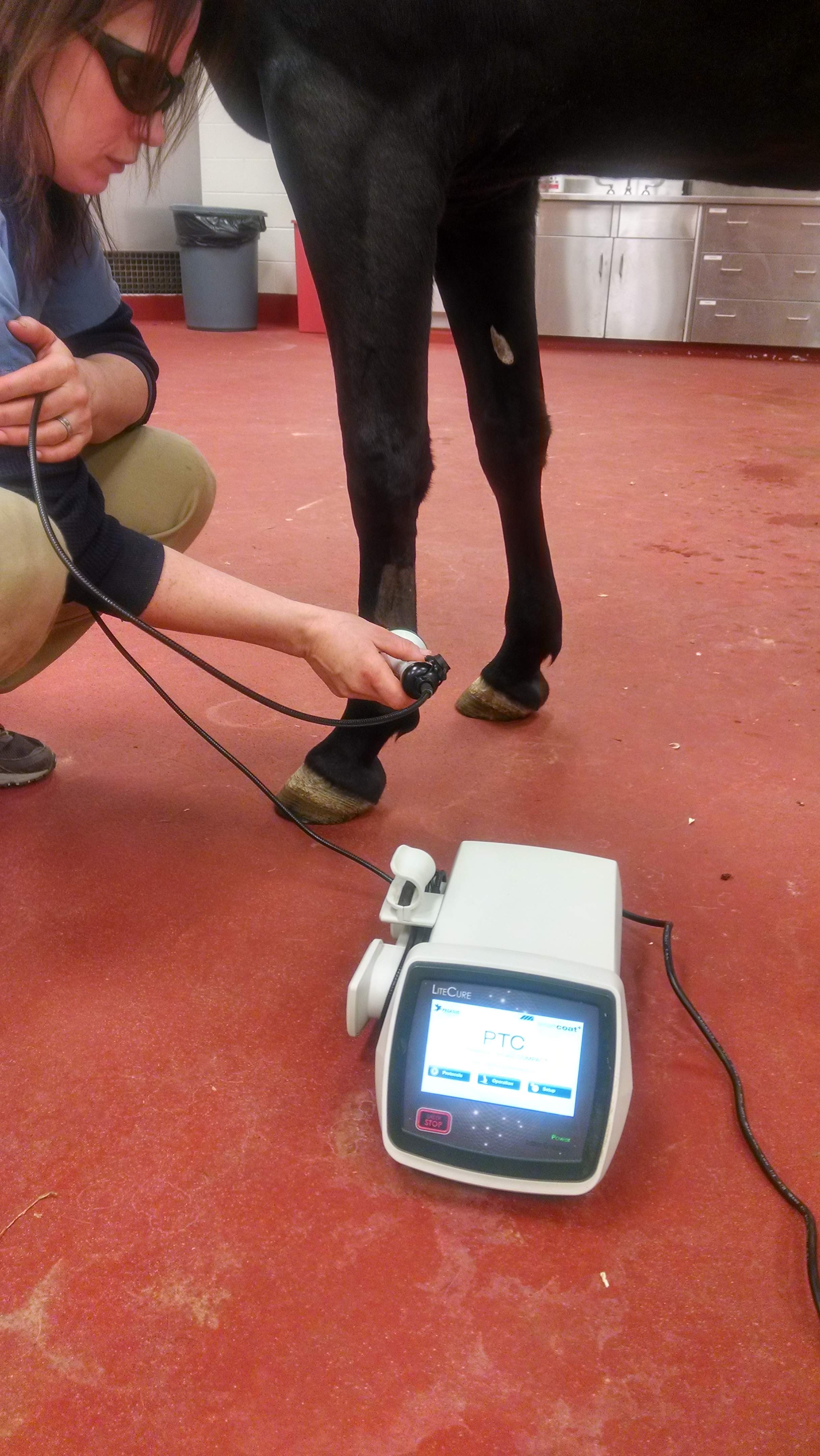How Laser Treatment in Equine Treatment Is Revolutionizing Vet Look After Horses
Laser therapy has actually emerged as a transformative technique in equine vet care, supplying a non-invasive solution that speeds up recovery and enhances total health and wellness. The mobility and versatility of laser treatment devices further emphasize their growing necessity among vets.
Comprehending Laser Therapy

The innovation behind laser therapy is based in the concept of photochemistry, where photons are absorbed by chromophores within cells, leading to boosted ATP production and inflection of responsive oxygen types (Equine Therapy). This, subsequently, promotes mobile spreading, minimizes swelling, and speeds up recovery. Vet specialists make use of various sorts of lasers, consisting of low-level lasers (LLLT) and high-power Class IV lasers, relying on the certain healing goals and the nature of the equine problem being dealt with
Different laser wavelengths and power setups are carefully chosen to target different tissue midsts and achieve preferred scientific results. Security protocols are vital, as incorrect use can result in thermal damages or suboptimal healing effects. Therefore, a detailed understanding of laser therapy's mechanisms and applications is vital for its efficient implementation in equine vet technique.
Benefits for Horse Health And Wellness
The myriad advantages of laser therapy for equine health and wellness incorporate boosted healing, pain reduction, and enhanced wheelchair. This sophisticated treatment technique leverages specific wavelengths of light to penetrate tissues, promoting cellular function and promoting fast cells repair work. The non-invasive nature of laser therapy ensures marginal stress and pain for the equine, helping with a smoother recovery procedure.
Boosted recovery is among the leading benefits, as laser therapy speeds up cellular regeneration and collagen synthesis. This causes quicker recovery times from injuries and operations. Pain reduction is achieved via the anti-inflammatory results of laser treatment, which decreases swelling and minimizes the production of pain-inducing chemicals. Because of this, steeds experience considerable remedy for persistent and sharp pain problems.
Improved movement is one more important advantage, specifically for efficiency and functioning steeds. By lowering swelling and discomfort, and enhancing tissue repair, laser therapy helps in recovering joint feature and muscular tissue adaptability. The advancing effect of these benefits is not only a quicker return to typical activity yet additionally a total improvement in the equine's lifestyle. Therefore, laser treatment stands as a transformative device in modern equine vet treatment.
Typical Conditions Dealt With
Laser therapy has arised as a functional therapy option for a range of usual equine conditions. Amongst these, bone and joint injuries are especially amenable to laser treatment. Equine Therapy. Soft tissue injuries, such as tendonitis and tendon pressures, take advantage of the anti-inflammatory and analgesic effects of laser treatments, which increase healing and lower discomfort. Additionally, laser treatment is effective for conditions like osteo arthritis, where it helps minimize joint inflammation and advertise tissue repair.
Wound management is one more location where laser treatment has shown substantial guarantee. Persistent injuries or slow-healing ulcers can be especially difficult in steeds, yet laser treatment boosts cellular regrowth and improves blood circulation, hence accelerating the healing procedure. Laser treatments have been effectively employed in handling unguis problems such as laminitis and abscesses, alleviating pain and promoting quicker healing.

Technology Behind Laser Therapy
Beyond the myriad problems treatable with laser treatment, the innovation itself advantages closer assessment. At the heart of laser treatment is making use of particular wavelengths of light to permeate tissues and evoke organic actions. These wavelengths, usually varying from 600 to 1000 nanometers, are uniquely taken in by chromophores in the skin, muscle, and various other read what he said cells, instigating a waterfall of mobile events.
Laser gadgets used in vet medication frequently utilize low-level laser treatment (LLLT) or chilly laser treatment. Unlike high-powered surgical lasers, these tools operate at lower power levels, maximizing restorative benefits while decreasing thermal damages. The energy from the laser light boosts adenosine triphosphate (ATP) manufacturing, enhances mobile metabolism, and increases tissue fixing procedures.

Success Stories and Situation Research Studies

Showcasing the tangible benefits of laser treatment, many success stories and study brighten its transformative influence on equine wellness. One such instance involves a purebred racehorse suffering from persistent tendonitis. Typical therapies generated marginal renovation, but after incorporating laser therapy into the program, the steed displayed substantial decreases in inflammation and discomfort within weeks, inevitably going back to affordable auto racing.
One more compelling instance features a dressage steed diagnosed with severe back discomfort, restricting its efficiency. A vet team used low-level laser treatment (LLLT) to target the inflamed areas, leading to marked improvement in flexibility and a noteworthy reduction in discomfort. Over several sessions, the steed regained its peak form, showcasing the effectiveness of laser treatment in attending to bone and joint concerns.
In addition, a research study carried out at a leading equine center examined 50 steeds with various soft cells injuries treated with laser therapy. The results stood out: 85% of the steeds demonstrated increased recovery times and enhanced flexibility. These cases highlight the convenience and effectiveness of laser treatment in equine medicine, supplying a non-invasive, scientifically-backed official source method to boosting recuperation and efficiency in equines.
Final Thought
Laser treatment is reinventing equine veterinary care by offering a non-invasive therapy that speeds up healing, lowers swelling, and alleviates pain. With its effectiveness in treating a variety of conditions, from musculoskeletal injuries to chronic conditions like osteoarthritis, this technology substantially enhances equine wellness and flexibility. The mobility and versatility of laser treatment further highlight its transformative effect on vet practices, solidifying its role as a vital tool in modern-day equine healthcare.